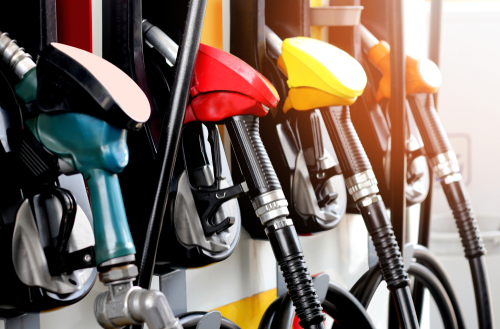
Here’s a look at how the average U.S. retail price of regular gasoline has trended from 1978 through 2025, followed by the main factors that drive those swings:
Average Gas Prices by Year (1978–2025)
Below is an interactive table and line chart showing the nominal annual average price per gallon of regular unleaded gasoline, with 2025 based on the EIA’s projection of $3.20 ∕ gal.
| Year | Average Gas Price (USD per Gallon) | Adjusted for Inflation (2024 dollars) |
|---|---|---|
| 1978 | $0.65 | $3.04 |
| 1979 | $0.88 | $3.70 |
| 1980 | $1.22 | $4.52 |
| 1981 | $1.35 | $4.53 |
| 1982 | $1.28 | $4.05 |
| 1983 | $1.22 | $3.74 |
| 1984 | $1.19 | $3.49 |
| 1985 | $1.19 | $3.37 |
| 1986 | $0.93 | $2.59 |
| 1987 | $0.95 | $2.55 |
| 1988 | $0.96 | $2.48 |
| 1989 | $1.06 | $2.61 |
| 1990 | $1.21 | $2.82 |
| 1991 | $1.19 | $2.66 |
| 1992 | $1.19 | $2.59 |
| 1993 | $1.17 | $2.47 |
| 1994 | $1.17 | $2.40 |
| 1995 | $1.25 | $2.50 |
| 1996 | $1.28 | $2.49 |
| 1997 | $1.29 | $2.45 |
| 1998 | $1.11 | $2.08 |
| 1999 | $1.22 | $2.24 |
| 2000 | $1.56 | $2.76 |
| 2001 | $1.53 | $2.64 |
| 2002 | $1.44 | $2.44 |
| 2003 | $1.63 | $2.70 |
| 2004 | $1.92 | $3.11 |
| 2005 | $2.33 | $3.64 |
| 2006 | $2.63 | $3.99 |
| 2007 | $2.84 | $4.18 |
| 2008 | $3.31 | $4.69 |
| 2009 | $2.40 | $3.41 |
| 2010 | $2.83 | $3.96 |
| 2011 | $3.57 | $4.84 |
| 2012 | $3.69 | $4.90 |
| 2013 | $3.58 | $4.69 |
| 2014 | $3.42 | $4.41 |
| 2015 | $2.51 | $3.23 |
| 2016 | $2.20 | $2.80 |
| 2017 | $2.46 | $3.06 |
| 2018 | $2.79 | $3.39 |
| 2019 | $2.69 | $3.21 |
| 2020 | $2.24 | $2.64 |
| 2021 | $3.13 | $3.52 |
| 2022 | $4.19 | $4.37 |
| 2023 | $3.71 | $3.73 |
| 2024 | $3.57 | $3.57 |
| 2025 (EIA forecast) | $3.20 | $3.20 |
Key Factors Affecting Gas Prices
1. Crude Oil Costs

Crude oil accounts for over half of your pump price. When global benchmark prices (like Brent or WTI) rise—due to OPEC production cuts, geopolitical tensions, or sanctions—retail gasoline follows suit .
2. Refining Capacity & Seasons
Refinery outages (planned or storm-related) reduce supply. Seasonal reformulations—winter blends vs. cleaner-burning summer blends—also add 5–15 ¢ /gal in the spring .
3. Taxes & Regulations
Federal, state and local taxes comprise roughly 18–35 ¢ /gal. Low-carbon fuel standards (e.g., California’s LCFS) and biofuel mandates further raise costs, especially in high-regulation markets.
4. Supply Chain & Distribution
Transportation from refinery to station—pipeline, rail, truck—can add 10–20 ¢ /gal. Remote or island states (Hawaii, Alaska) often pay a premium for freight.
5. Seasonal Demand Swings
Summer driving seasons (Memorial Day–Labor Day) boost demand, while winters see lower consumption. Pump prices typically peak from May through July and dip from December to February.
6. Geopolitical & Economic Events
- 1979 Iranian Revolution and 1980 Iran–Iraq War sent prices above $1 /gal for the first time in real terms.
- 1990 Gulf War briefly spiked costs.
- 2008 financial crisis drove crude down from $145 /barrel, cutting gas to about $2.40 /gal.
- 2020 COVID-19 collapse saw gas below $2.25 /gal.
- 2022 Russian invasion of Ukraine pushed prices to a 40-year high around $4.19 /gal in 2022 before easing .
7. Refinery & Storage Inventories
High refinery runs and ample storage keep prices stable; low stocks (measured weekly by the EIA) can trigger quick tick-ups at the pump.
8. Currency Fluctuations
Since oil trades in USD, a weaker dollar makes imports costlier, lifting domestic fuel prices, while a stronger dollar provides downward pressure.
Understanding these drivers helps you see why your fill-ups cost what they do and what might happen next. Watching crude benchmarks, EIA inventory reports, and major geopolitical developments can give you a heads-up on future pump prices.
